There are many ancient cities in Antalya and Kas area. Patara Ancient City, which is connected to Kas district of Antalya, is also known for its long beach. In addition, with the announcement of 2020 as the year of Patara, its importance in terms of tourism has increased.
Patara History
The settlement in Patara goes from the Iron Age to the old times, and the findings from those times also support this. Undoubtly, it is one of the oldest cities in the region. The city, which is called “Patar” in the Hittite language, was named “Pttara” in the Lycian language.
In the 2nd century BC, Patara gained its autonomy from Rome and independence from Rhodes, and after being attached to the Seleucid Kingdom, it became the capital of the Lycian Union. It continued to maintain its importance after it came under the rule of the Roman Empire. It was able to maintain its importance for centuries thanks to being a naval base connecting Rome to Anatolia and being a granary for trade ships.
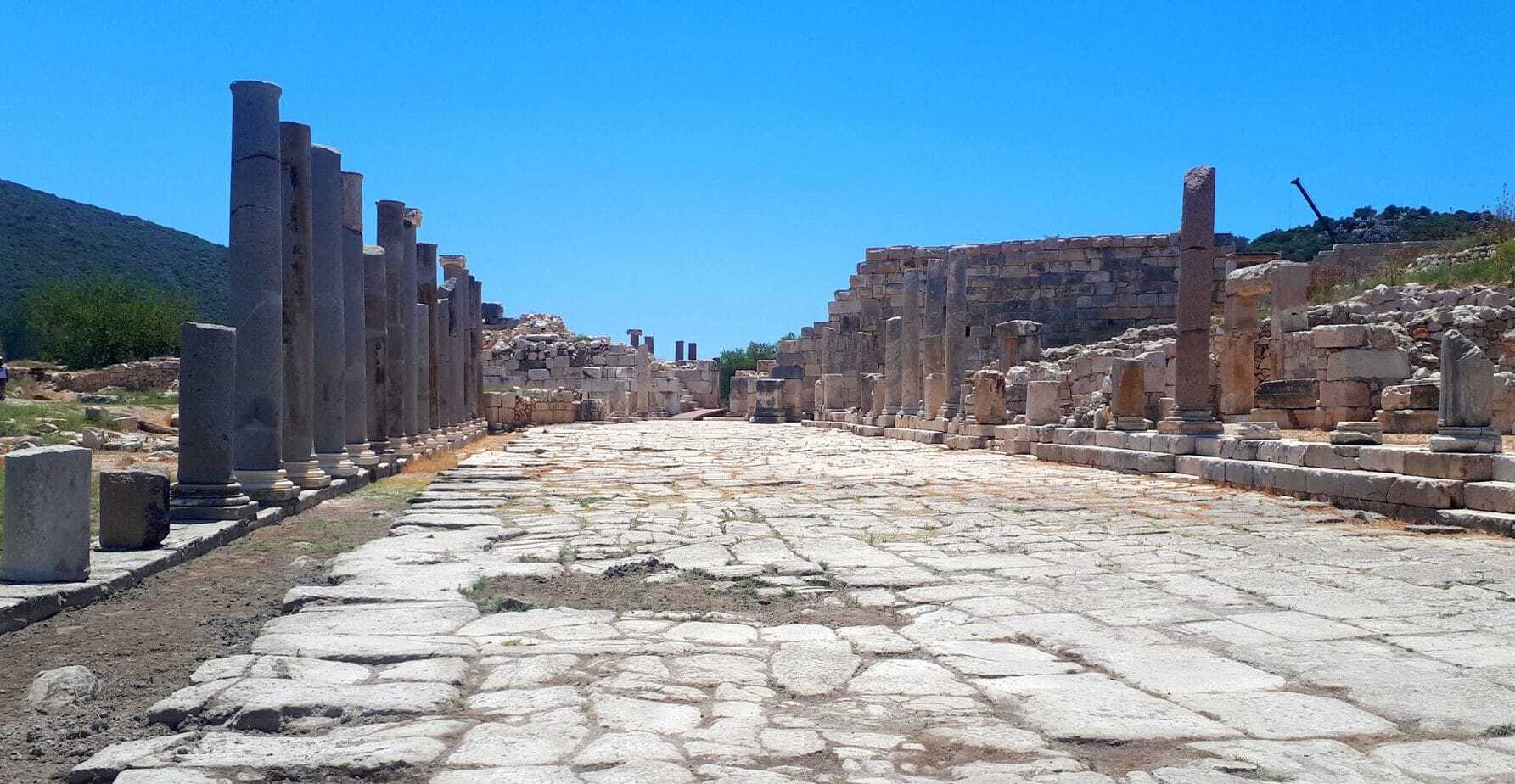
Arch of Mettius Modestus
Four hundred meters after the main entrance of Patara, you will see the Mettius Modestus Arch on the right. The arch, which symbolizes the entrance to the city from the north, from the land, was built by Mettius Modestus, the governor of the city in 100 AD. The arch, which is a 10 meter high structure with three arches, was built using local limestones.
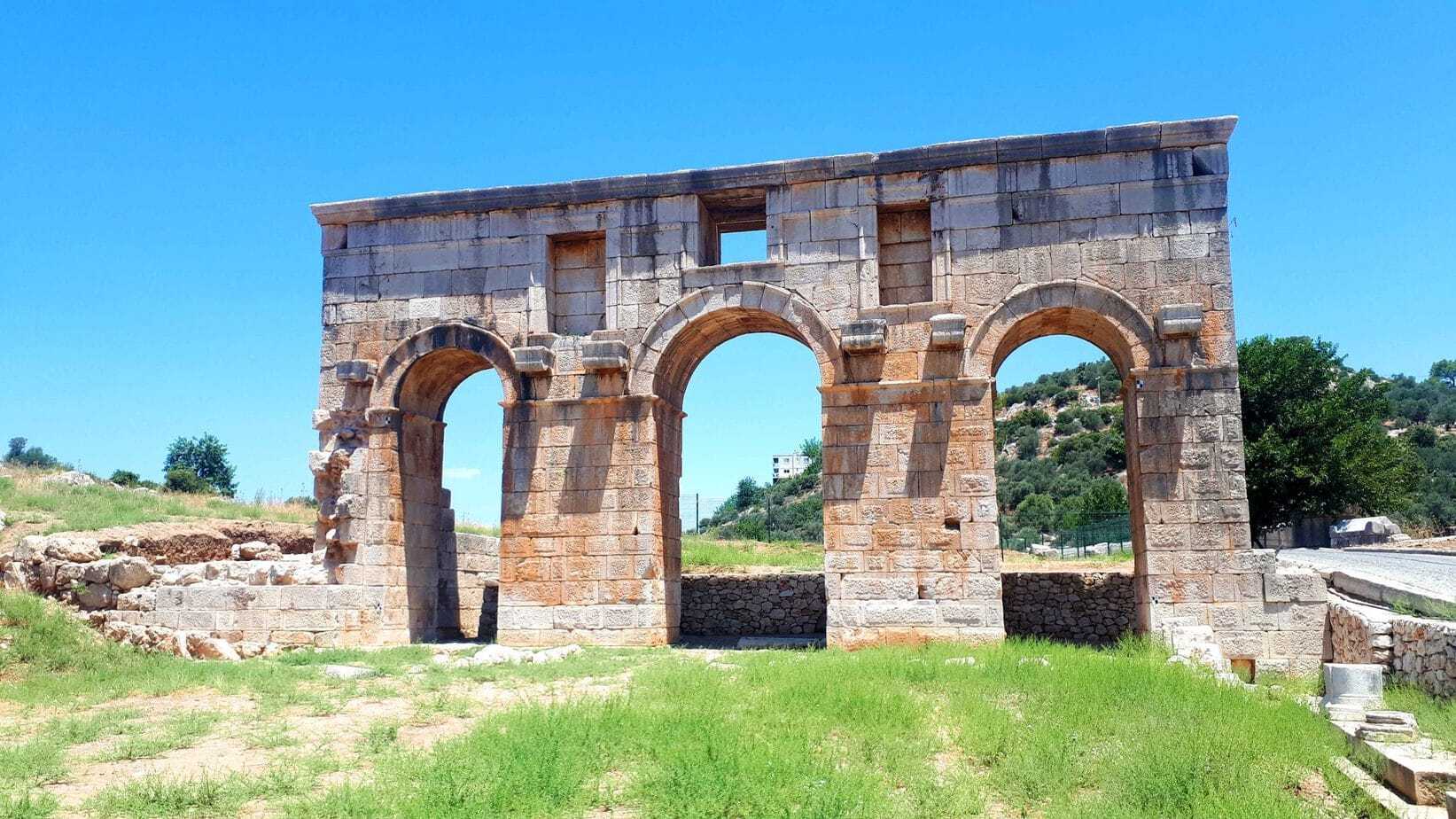
The inscription on the arch, which says “People of Patara, the Capital of the Lycian Nation” on the entrance side, says “It honors the general governor of Lycia and Pamphylia, Mettius Modestus, his father Mettius Rufus, his mother Honorata, the governor’s god and the philanthropists of the city of Patara.”
To be able to examine the Arch, you have to park your car on the side of the road and then continue the drive again because the arch is quite far from the center of the ancient city. Since Patara is one of the biggest cities of its time, the artifacts found are spread over a wide area.
Byzantine Basilica
After passing the Arch, you can see the remains of the Byzantine Basilica a little further on the right. The basilica, built in the 6th century AD, is one of the earliest and largest Christian basilicas in Lycia, as well as the only basilica in Patara.
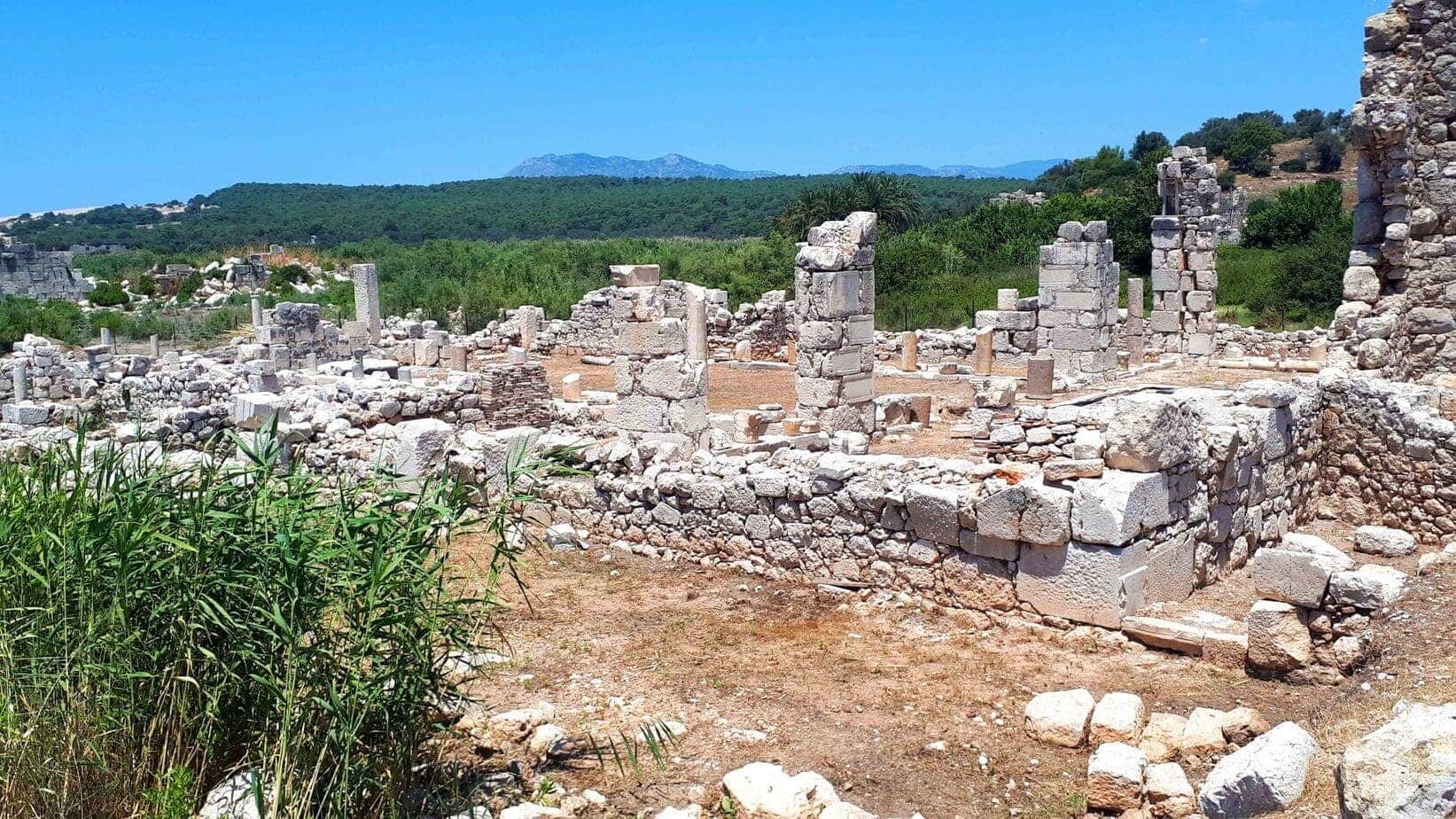
An episcopal palace was discovered next to the basilica, but most of this palace is still waiting to be unearthed under the ground.
Lycian Union Parliament Building
French intellectual Montesquieu shows Lycia as “a perfect example of the republican model” in his famous work “Spirit of Laws”. Now we are in the assembly of this republic.
The parliament building, called Bouleuterion, was built in the 2nd century BC and has grown over time with additions. After it was destroyed in an earthquake in the 2nd century AD, it was rebuilt and the odeion, the music house, was brought to its function.
This structure, which looks like a small theater, with a capacity of approximately 1400 people, also has a lodge called tribunelle built for the governor.
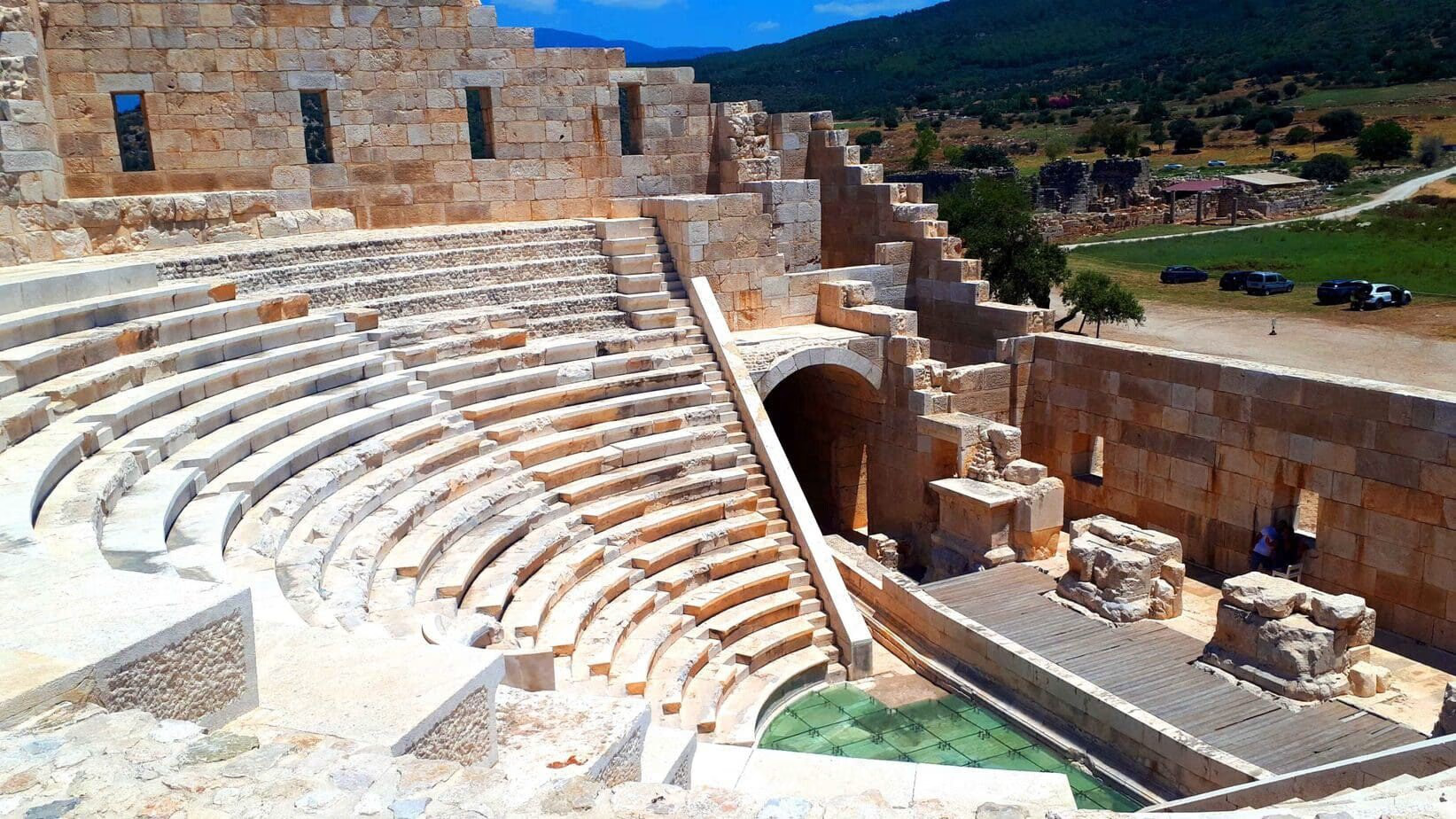
In front of the Union Parliament Building, the inscriptions found in the excavations of the ancient city of Patara are lined up. Among these inscriptions, there is the list of councilors.or some of them made to honor the city’s notables after their death,




Theater
There is an ancient theater located in the south of the city and close to the sea and made in -2 BC. with a capacity of 6000 people, A temple was also built at the top of the theater. This temple, dedicated to God and the emperor cult, is considered an important practice for Patara theater. In addition to the plays, gladiator and wild animal fights were also performed in the theater.
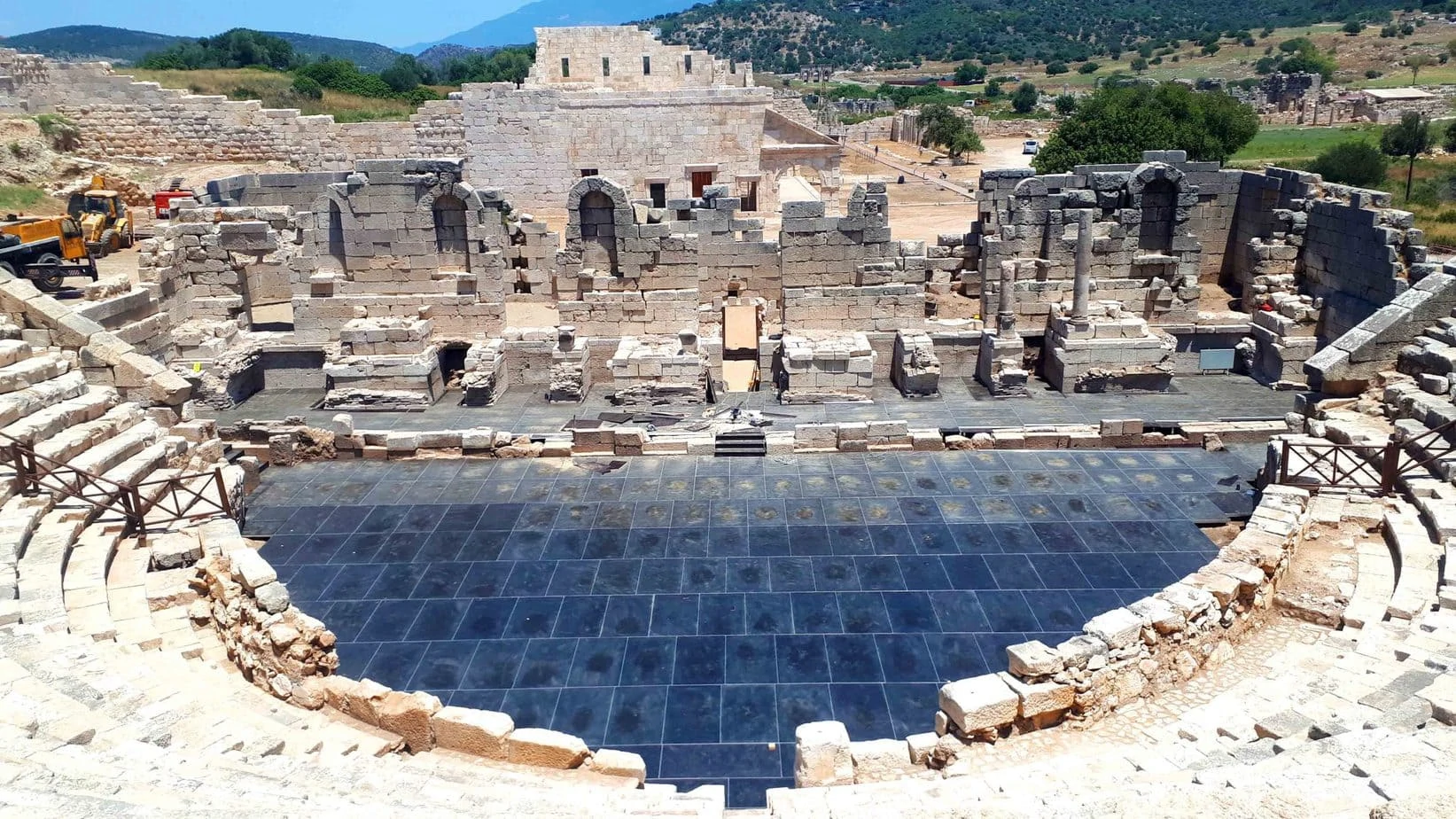
Main street
Patara’s very well-preserved, 12-meter-wide main street connected the port to the main street whwre folks meet each other for trade and gatherings. On both sides of the street, you can notice unearted a 100-meter section consisting of colonnaded porches made of granite and marble. Foundations of the shops behind these porches can be seen.
Since there are no wheel tracks on the street, it is thought that the street is only for pedestrian use. It was also determined that the sewage system passed under the street. The street, which collapsed and was flooded by earthquakes, looks very interesting today with its columned structure.
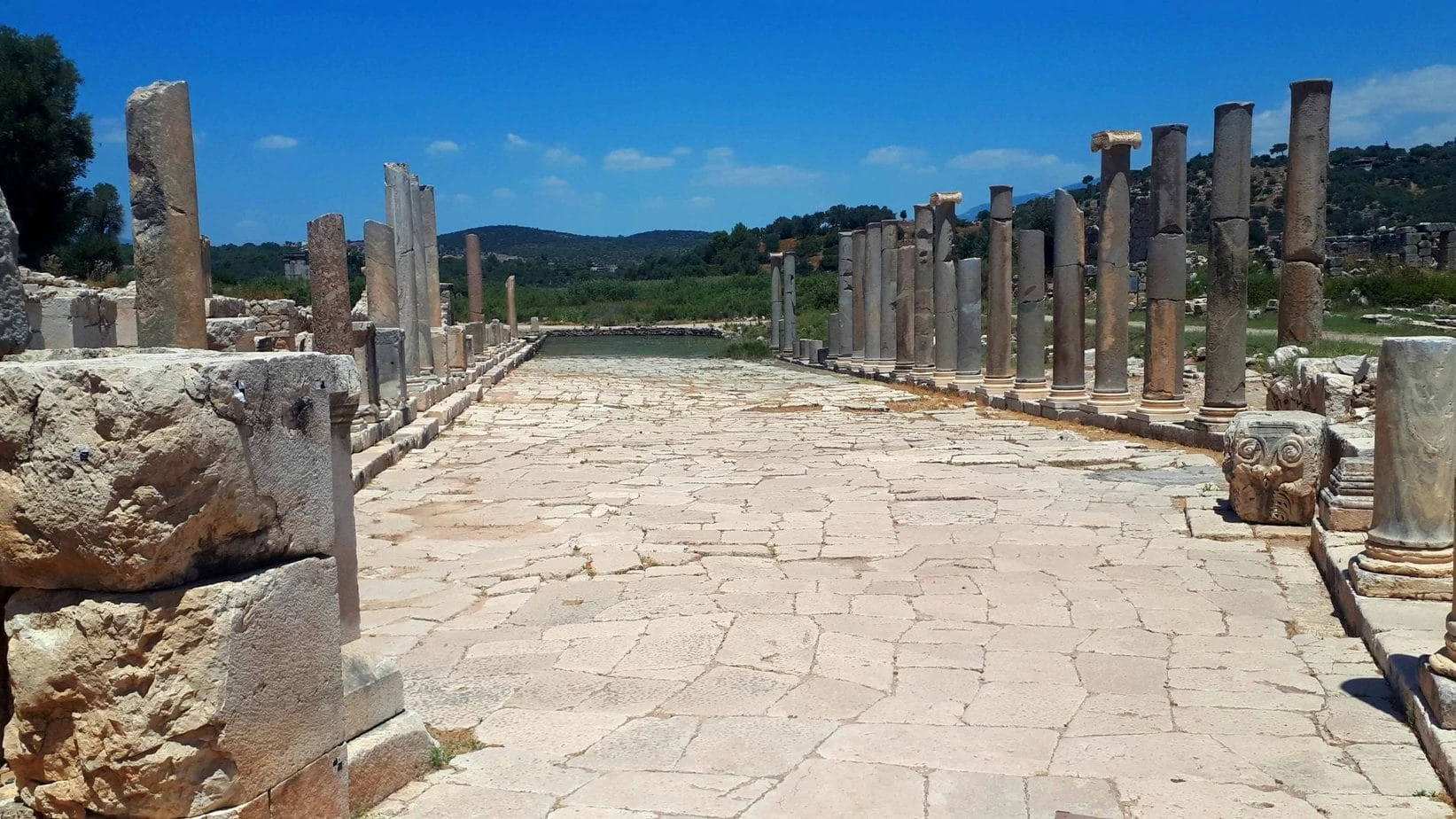
Bath
Next to the Main Street, there is a building taught to be the city’s central bath. Since a part of the bath is still under the ground, it looks more like a ruin today. It is understood from the discovered part that the bath consists of sections such as cold, warm and hot, but the century in which it was built has not yet been determined.
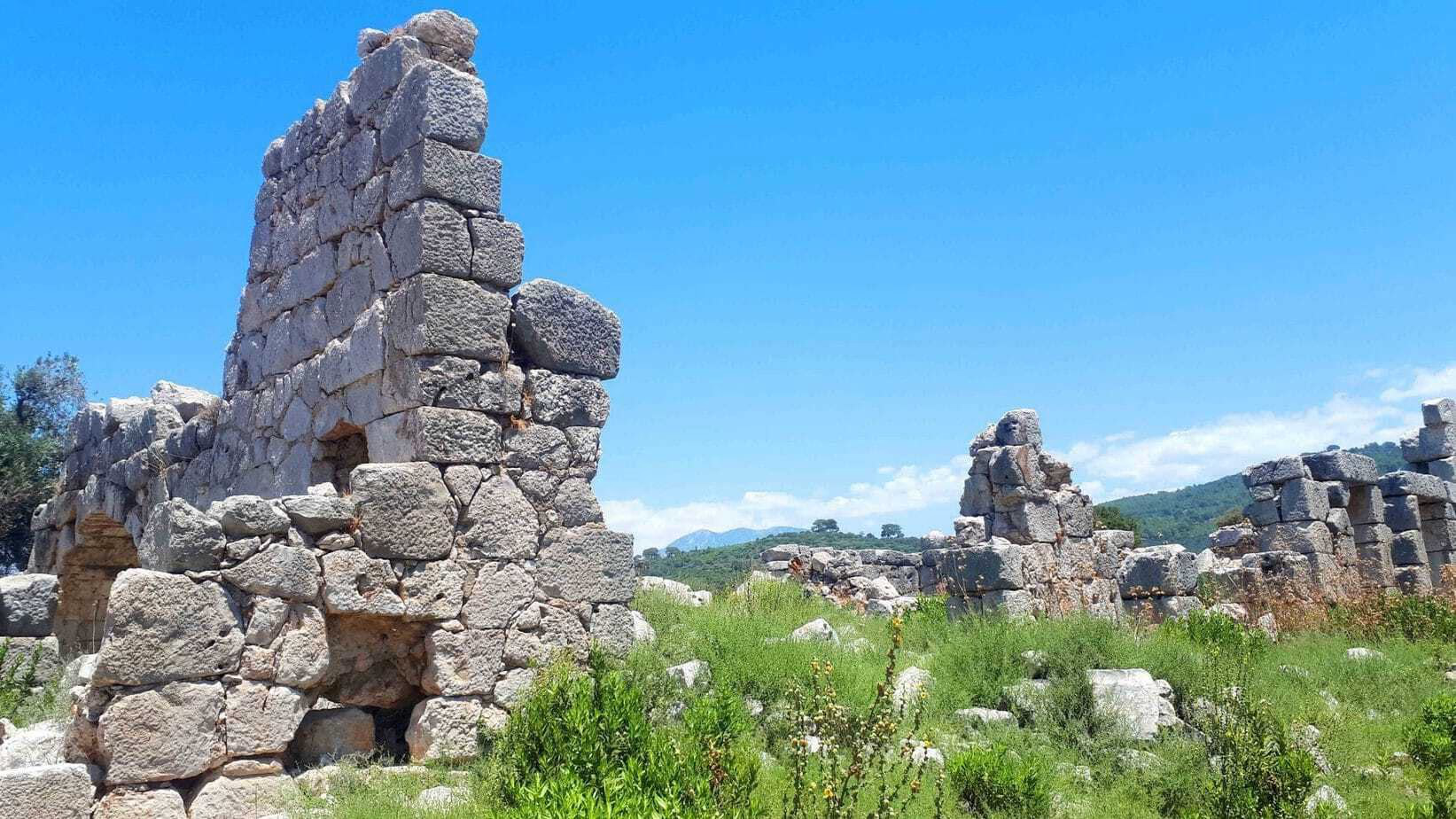
Patara Beach
Patara Beach is located on the continuation of the ancient city. The beach has a fine sandy, shallow sea and the sea is generally wavy. Facilities such as shower, toilet, changing cabin, sunbed, umbrella, and a cafe are available on the beach. This is one of Turkey’s largest sandy beach 12 km long. The sand layer can reach 300 meters in some places.

Patara Beach is an important breeding area for the Caretta Caretta turtles, which are important creatures of the Mediterranean.
Kalkan, 07960 Kaş/Antalya, Turkey

